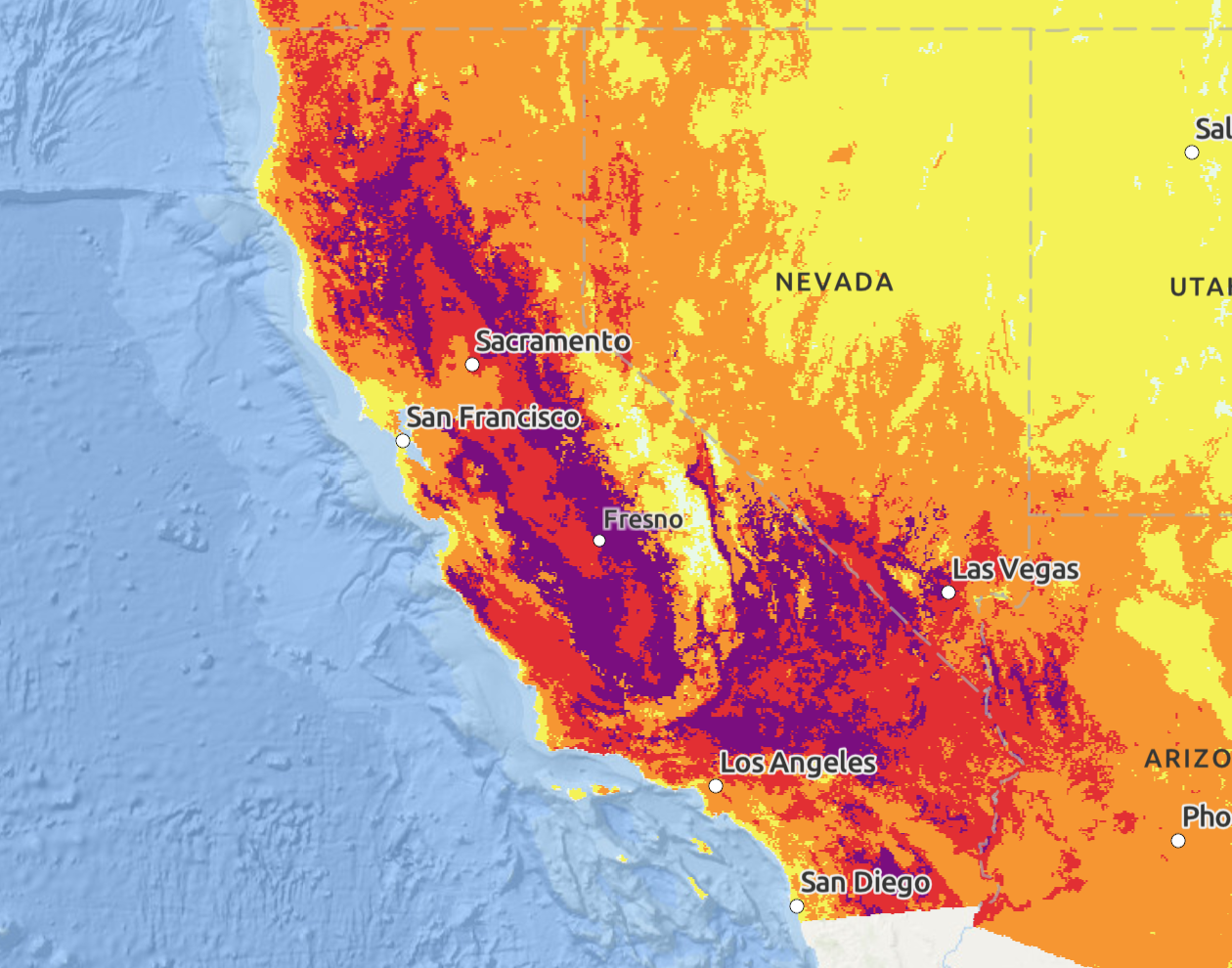What you need to know: The Fourth of July week is expected to bring 110 degree-plus temperatures across much of California. Take steps now to prepare for the heat.
SACRAMENTO – With temperatures set to exceed 110 degrees throughout much of the state this week, Governor Gavin Newsom is urging Californians to take extra precautions as they celebrate the Fourth of July.
The Governor directed the Office of Emergency Services to activate its State Operations Center and move into Phase II of its Extreme Temperature Response Plan. This is triggered by National Weather Service (NWS) predictions of excessive heat activity and moves the state into action to coordinate an all-hands response by state government.
The state has already begun outreach to a network of community organizations to ensure the most vulnerable Californians can access resources like cooling centers. Additionally, the state is enforcing heat protections for outdoor workers.

National Weather Service HeatRisk Map for Friday, July 5, 2024
Excessive heat warnings and watches are in effect for much of California starting Tuesday through the end of the week and weekend. NWS is forecasting Extreme HeatRisk for many parts of the state, with hot conditions between 105 and 115 degrees for multiple days and little overnight relief. Extreme heat kills more Americans every year than all other extreme weather, including wildfires and flooding.
This heatwave is serious. We’re used to hot temperatures in California but this will be several days with little relief overnight.
As we come together this week to celebrate the Fourth of July, look out for each other and take steps to stay safe. Don’t let this heat catch you by surprise, California.
Governor Gavin Newsom
How you can stay safer from extreme heat
Go to ready.ca.gov to find resources and tips to stay safe from extreme heat, and other natural disasters.
Stay cool (during the hottest times of the day):
- Those without air conditioning should consider going to a cooling center. Check out this list of cooling centers across the state or visit a public location such as a library or shopping mall.
- Avoid physical exertion or exercising outdoors.
- Wear lightweight, light colored, loose clothing, hats, sunglasses and sunscreen.
Stay hydrated:
- Drink plenty of fluids, especially water, even when not thirsty; drink sports drinks (in moderation with water) to help replace electrolytes lost during exercise.
- Avoid sugary, alcoholic, and very cold drinks.
- Eat plenty of fruits and vegetables.
Stay connected:
- Monitor those at higher risk of heat-related illness including infants and young children; people 65 years of age or older; individuals with chronic illness, disabilities or who are pregnant. Determine risk at heatreadyca.com.
- Californians are also encouraged to check on their neighbors – call or visit higher risk people, and offer to pick up groceries, medication, and other necessities. Older adults, young children and babies, people with chronic medical conditions and those who are pregnant are most at risk.
- Use a buddy system when working in the heat.
Stay informed:
- Check the local news for weather forecasts, extreme heat alerts, and cooling centers.
Stay safe outdoors:
Warm summer weather is causing continued snow melt from winter’s record snowpack, resulting in colder and faster water that continues today. Remember to always be safe around the water:
- Make sure you and your loved ones wear properly fitting, U.S. Coast Guard-approved life jackets. Several public and private entities make life jackets available to the public on a loan basis.
- Always supervise children by appointing a designated “water watcher.”
- Know your limits. Swimming in a lake, ocean or river is different than swimming in a pool.
- If someone is in distress, seek help from a lifeguard or call 9-1-1 if one is not available.
